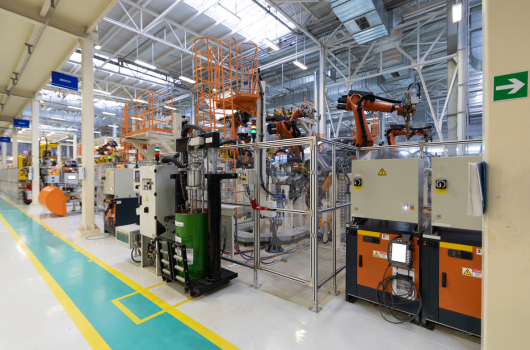Czech economy grew in the last quarter
Economic commentary by Jakub Seidler, Chief Economist of the CBA

According to a refined estimate published today by the CZSO, the domestic economy grew by 0.2% quarter-on-quarter in the final quarter of last year, but fell by 0.2% year-on-year (see Chart 1). The revised estimate was thus the same as the preliminary one published at the end of January. The GDP development at the end of last year was ultimately in line with the earlier analysts' consensus, but it turned out to be above the expectations of the CNB's latest forecast, which assumed quarter-on-quarter economic stagnation. For the whole of last year, the domestic economy contracted by 0.4%, while it will grow by 2.4% in 2022. For this year, estimates are revised downwards for now, and growth is expected to be relatively subdued at around 1% for the most part.
Quarter-on-quarter growth in the economy was mainly driven by net exports, with exports growing by 2.2% qoq, but imports also falling by 2.4%. Household consumption also grew by 0.5% whereas in the previous quarters it had declined for two straight years except in Q2 last year. Investment activity accelerated at the end of last year, with fixed investment rising by 1%, mainly due to infrastructure investment as well as investment in housing. Overall, however, investment contributed negatively to growth on account of a fall in inventories. The volatility of inventories has been reflected here for some time, but the fall in inventories due to the completion of production is often reflected in export growth. Government consumption, on the other hand, has fallen. In year-on-year terms, household consumption was still slightly negative and 8.3% below the end-2019 level (see Chart 2).
Compared to the CNB's expectations, household consumption grew slightly faster, while government consumption fell, while the CNB expected stagnation. The estimate for fixed investment was broadly in line, with the main surprise coming from net exports, which were noticeably above the CNB's expectations, but this was partly offset by a more pronounced fall in inventories (see table).
On the supply side, growth in the final quarter was driven, as expected, mainly by manufacturing due to accelerating production in automotive plants. Real estate services were also buoyant, but overall the development in services was subdued, with quarter-on-quarter growth of 0.4% on aggregate, compared with 3% growth in manufacturing.
The development of the domestic economy at the end of the year was ultimately slightly more favourable, as some earlier estimates had suggested only stagnation after it had contracted by 0.8% in the previous quarter (after revision, previously -0.6). However, the pattern of growth shows that growth was largely driven by the automotive sector, which increased both output and exports. However, the domestic economy is still failing to pick up the pace of growth and lags behind other EU countries in this respect (Chart 3). In particular, the fall in household consumption compared to the end of 2019 is the main problem behind GDP growth. This is on top of a strong fall in real household incomes, but other effects may also play a role, such as households' purchases abroad or a shift to the informal economy.
For the whole of last year, the domestic economy ended in a slight decline of 0.4% (see table). Without the strong influence of the automotive sector, which dragged down the whole industry, the economic decline would have been over 1%. However, the automotive sector is already at the edge of its capacity and is unlikely to provide a similarly strong growth boost this year as last year. At the same time, the outlook for the German economy, which according to the latest estimates is expected to stagnate this year, is being revised downwards. Foreign demand is therefore likely to be subdued in the first half of the year. Household confidence is also still at low levels, despite a slight improvement in recent months, and the speed of the recovery in household consumption is thus questionable, as the cost-of-living increases of the last two years will continue to weigh on household budgets. Combined with the consolidation package, domestic economic growth can thus be expected to remain relatively weak this year and, from today's perspective, it would be a success if it breaks the 1% mark;
GDP development of the domestic economy
Annual growth rate
household consumption government consumption investment
exports imports net exports (contribution)
GDP structure
(adjusted for working days and seasonality)
GDP
-household consumption
-government consumption
- investment and inventories
- fixed investment
-exports
-imports
